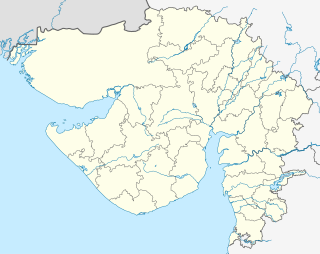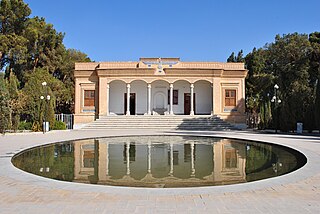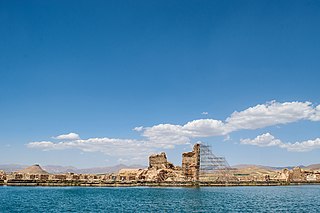
Zoroastrianism or Mazdayasna is one of the world's oldest continuously practiced religions based on the teachings of the Iranian-speaking prophet Zoroaster. It is a multi-faceted faith centered on a dualistic cosmology of good and evil and an eschatology predicting the ultimate conquest of evil with theological elements of henotheism, monotheism/monism, and polytheism. Zoroastrianism exalts an uncreated and benevolent deity of wisdom, Ahura Mazda, as its supreme being. Historical features of Zoroastrianism, such as messianism, judgment after death, heaven and hell, and free will may have influenced other religious and philosophical systems, including Second Temple Judaism, Gnosticism, Greek philosophy, Christianity, Islam, the Baháʼí Faith, and Buddhism.

Zoroaster, also known as Zarathustra, Zarathushtra Spitama, or Ashu Zarathushtra, was an ancient Iranian prophet who founded what is now known as Zoroastrianism. His teachings challenged the existing traditions of the Indo-Iranian religion and inaugurated a movement that eventually became the dominant religion in Ancient Persia. He was a native speaker of Old Avestan and lived in the eastern part of the Iranian Plateau, but his exact birthplace is uncertain.

The Avesta is the primary collection of religious texts of Zoroastrianism, composed in Avestan language.

Yazdegerd I, also spelled Yazdgerd I and Yazdgird I, was the Sasanian King of Kings of Iran from 399 to 420. A son of Shapur III, he succeeded his brother Bahram IV after the latter's assassination.

Ardashir I or Ardeshir I, also known as Ardashir the Unifier, was the founder of the Sasanian Empire. He was also Ardashir V of the Kings of Persis, until he founded the new empire. After defeating the last Parthian shahanshah Artabanus IV on the Hormozdgan plain in 224, he overthrew the Parthian dynasty and established the Sasanian dynasty. Afterwards, Ardashir called himself "shahanshah" and began conquering the land that he called Iran.

Khorāsān, sometimes called Greater Khorasan, is a historical region which formed the northeast province of Greater Iran. The name signifies "the Land of the Sun" or "the Eastern Province".

Vishtaspa is the Avestan-language name of a figure of Zoroastrian scripture and tradition, portrayed as an early follower of Zoroaster, and his patron, and instrumental in the diffusion of the prophet's message. Although Vishtaspa is not epigraphically attested, he is – like Zoroaster also – traditionally assumed to have been a historical figure, and – again, like Zoroaster – that figure is obscured by accretions from legend and myth.

A fire temple, Agiary, Atashkadeh, Atashgah (آتشگاه) or Dar-e Mehr is the place of worship for the followers of Zoroastrianism, the ancient religion of Iran (Persia). In the Zoroastrian religion, fire, together with clean water, are agents of ritual purity. Clean, white "ash for the purification ceremonies [is] regarded as the basis of ritual life", which "are essentially the rites proper to the tending of a domestic fire, for the temple [fire] is that of the hearth fire raised to a new solemnity". For, one "who sacrifices unto fire with fuel in his hand ..., is given happiness".

Kashmar is a city and the capital of Kashmar County, in Razavi Khorasan Province, Iran. Kashmar is located near the river Shesh Taraz in the western part of the province, and south of the province's capital Mashhad, in Iran, from east to Bardaskan, west to Torbat-e Heydarieh, north to Nishapur, south to Gonabad. Until two centuries ago, this city was named Torshiz (ترشیز). At the 2006 census, its population was 81,527, in 21,947 families.

Zoroastrians are the oldest remaining religious community in Iran. Prior to the Muslim conquest of Persia, Zoroastrianism was the primary religion of the Persian Empire.

The Story of Sanjan is an account of the early years of Zoroastrian settlers on the Indian subcontinent. In the absence of alternatives, the text is generally accepted to be the only narrative of the events described therein, and many members of the Parsi community perceive the epic poem to be an accurate account of their ancestors.
Zoroastrianism in Azerbaijan goes back to the first millennium BC.or earlier and was the predominant religion of Greater Iran before the conversion to Islam. The name Azerbaijan is Persian and means "protect(or) of Fire", which is said to have a direct link with Zoroastrianism.

The Sasanian or Sassanid Empire, officially known as the Empire of Iranians, and called the Neo-Persian Empire by historians, was the last Persian imperial dynasty before the Muslim conquest in the mid seventh century AD. Named after the House of Sasan, it endured for over four centuries, from 224 to 651 AD, making it the longest-lived Persian dynasty. The Sasanian Empire succeeded the Parthian Empire, and reestablished the Iranians as a superpower in late antiquity, alongside its neighbouring arch-rival, the Roman-Byzantine Empire.

Kartir was a powerful and influential Zoroastrian priest during the reigns of four Sasanian kings in the 3rd-century. His name is cited in the inscriptions of Shapur I and the Paikuli inscription of Narseh. Kartir also had inscriptions of his own made in the present-day Fars Province. His inscriptions narrates his rise to power throughout the reigns of Shapur I, Hormizd I, Bahram I, and Bahram II. During the brief reign of Bahram II's son and successor Bahram III, Kartir was amongst the nobles who supported the rebellion of Narseh, who overthrew Bahram III and ascended the throne. During Narseh's reign, Kartir fades into obscurity, due not doing anything noteworthy as high priest.

Udvada is a town situated in Pardi taluka in the Valsad district in the state of Gujarat, India. Udvada is a coastal town located around 24 km from the Valsad city. The Zoroastrian temple, Udvada Atash Behram is situated here.

The Fire Temple of Yazd, also known as Yazd Atash Behram, is a Zoroastrian fire temple in Yazd, Yazd province, Iran. It enshrines the Atash Bahram, meaning “Victorious Fire”, dated to 470 AD. It is one of the nine Atash Bahrams, the only one of the highest grade fire in ancient Iran where Zoroastrians have practiced their religion since 400 BC; the other eight Atash Bahrams are in India. According to Aga Rustam Noshiravan Belivani, of Sharifabad, the Anjuman-i Nasiri opened the Yazd Atash Behram in the 1960s to non-Zoroastrian visitors.

Adur Gushnasp was the name of a Zoroastrian sacred fire of the highest grade, which served as one of the three most sacred fires of pre-Islamic Iran; the two others being the Adur Farnbag and Adur Burzen-mihr. Out of the three, Adur Gushnasp is the only fire whose temple structure has been discovered and "for which archaeological, sigillographical, and textual evidence are all available."

Adur Burzen-Mihr or Azar Barzin was an Atash Bahram located in Parthia. In the Sasanian period it was one of the three Great Fires and was associated with the farmer class; the other two were Adur Farnbag in Persis which was associated with the priest class, and Adur Gushnasp in Media, which was associated with the warrior class. Its establishment can be dated to the late 5th or early 4th century BC. Adur means "Holy Fire", and Burzēn-Mihr is a Parthian given name which literally means "Exalted is Mihr" and is probably the name of the temple's founder.

Atashgah Castle is a castle in the city of Kashmar, and is one of the attractions of Kashmar. This castle was built by the Sasanian government and it was famous in ancient times.

The history of this city goes back to Zarathustra and the Sarv-e Abarkuh, the Cypress of Kashmar. It seems that this is the only miracle of this prophet that there are many legends about it.












